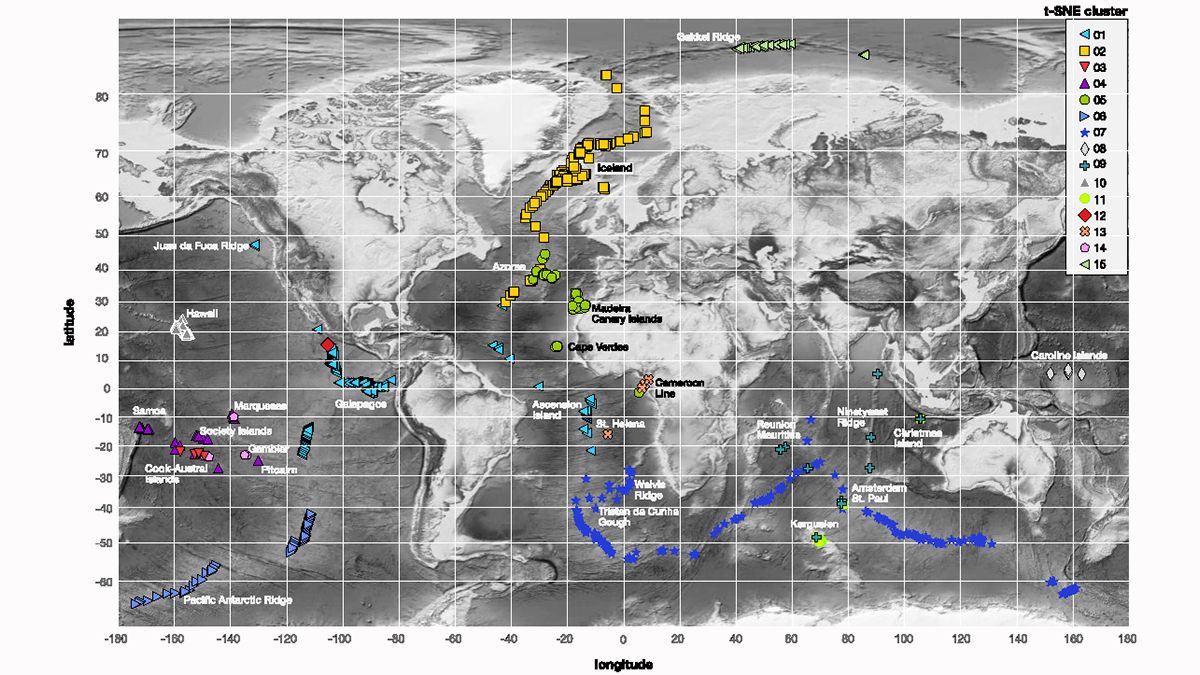Editors’ Highlights are summaries of recent papers by AGU’s journal editors.
Source: Geochemistry, Geophysics, Geosystems
In a new study, Stracke et al. [2022] offer perhaps the most ambitious attempt yet to revisit the classic idea that the variations in radiogenic isotope ratios among oceanic basalts can be assigned a geodynamic significance. Papers from the 1980s that evaluated the distribution of samples on the globe and in three-dimensional (87Sr/86Sr-143Nd/144Nd-206Pb/204Pb) or four-dimensional (with 4He/3He) isotope space reached divergent conclusions because there are too many potential end members to obtain a unique solution to the mixing problem. The community never really agreed on the essential question of whether a point in multi-isotope ratio space necessarily corresponds to a discrete reservoir in the mantle with a particular history.
Modern data science that can easily handle large datasets of six-dimensional data (87Sr/86Sr-143Nd/144Nd-206,207,208Pb/204Pb –176Hf/177Hf) offers new strategies for visualizing the isotopic architecture of mantle-derived magmas. The t-distributed stochastic neighbor embedding (t-SNE) algorithm identifies 15 distinct clusters that could not be easily visualized before. These isotopic clusters are geographically clustered as well, showing that upper mantle domains can be sampled both on and off mid-ocean ridges and that multiple upwellings from a common domain may feed spatially associated ocean island clusters. No common component that feeds both mid-ocean ridges and ocean-island volcanoes exists in the multidimensional space.
Citation: Stracke, A., Willig, M., Genske, F., Béguelin, P., & Todd, E. (2022). Chemical Geodynamics Insights from a Machine Learning Approach. Geochemistry, Geophysics, Geosystems, 23, e2022GC010606. https://doi.org/10.1029/2022GC010606
—Paul Asimow, Editor, Geochemistry, Geophysics, Geosystems

